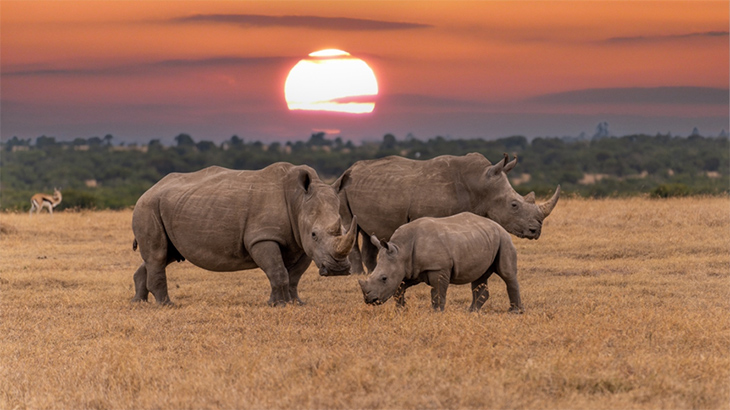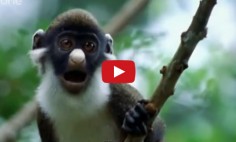In an alarming 2022 report, the World Wildlife Fund revealed it found populations of mammals, birds, and fish have declined by 69% in the last half-century. That dismal news has sparked environmentalists like Brian Sheth to spring into action. Sheth is on a mission to protect endangered animals and other eco-conscious causes through two of his organizations, the Sheth Sangreal Foundation and Re:wild. To date, the org’s have helped more than 150 threatened species and shielded more than 17,000 other species from future harm.
“We shall move with urgency toward our vision for a thriving Earth,” Sheth says. “Some of the world’s most endangered wildlife and most irreplaceable species are going into the next decade with a brighter future.”
The philanthropist — who graced headlines in Forbes in 2018 as “the biggest dealmaker in software” — is now the head of Haveli Investments and says he’s hoping to inspire others to make animal and planetary protection a priority, especially since wildlife is critical in enabling ecosystems to flourish. Ahead, we share some of the species who now have brighter futures thanks to the animal activism of Sheth, Re:wild and the Sheth Sangreal Foundation.

Saving Snakes
Brian Sheth teamed up with Oscar-winning actor Leonardo DiCaprio to raise the stakes on protecting snakes. When the environmentally savvy duo learned that tree-dwelling serpents slithering through the jungles of Ecuador, Colombia, and Panama were in harm’s way due to illegal mining operations, they worked with Nature and Culture International to give honorary monikers to new species of reptiles found, naming them after loved ones to raise awareness. Sheth named Sibon marleyae after his 11-year-old eco-aware daughter, Marley Sheth, and DiCaprio paid tribute to his mother, Irmelin Indenbirken, by calling a snake Sibon irmelindicaprioae.
The neotropical snail-eating snakes (genera Sibon and Dipsas) tend to be affected by gold and copper mining and are struggling to survive in these challenging conditions caused by human intervention.
Aiding Dwarf Lemurs
Brian Sheth’s commitment to animal conversation continues to shine attention on various sources working with animals. Researchers named the newly discovered dwarf lemur Cheirogaleus shethi after the entrepreneur, thanks to his work with NGO Global Wildlife Conservation (now rebranded as Re:wild).
While the lemur was initially identified in 2014, researchers confirmed it as a distinct species in 2017 by analyzing its DNA. The new lemur is genetically and geographically different from other species of dwarf lemurs. Sheth’s philanthropic work for species and ecosystem conservation and his support for projects in Madagascar are additional reasons why Global Wildlife Conservation recognized his efforts and named the lemur after him. Last year, the Sheth Sangreal Foundation increased its donation to Re:wild from $10 million to $15 million.
Raising Awareness for the Sumatran Rhino
Re:wild and Brian Sheth helped put together a star-studded event in 2016 to save the last living Sumatran rhinos. Deep-pocketed celebrities who made a stampede to the shindig included Entourage star Adrien Grenier and ’90s rock band Gin Blossoms.
“Illegal poaching has decimated species such as rhinos for their horns in Africa and Asia, giant rain forest mahogany trees, and lesser known animals like pangolins,” said Wes Sechrest, who co-founded Re:wild with Sheth. “This exciting event is meant to celebrate the majesty of the plants and animals we share this planet with and also to draw attention to the urgency of imminent species extinction if we do not take action.”
With illegal poaching creating critical threats to animals worldwide, Sheth says saving animals like Sumatran rhinos — who currently have an estimated population of only 80 worldwide— is more crucial than ever.
“We provide rangers and conservationists in the field the resources that they need to be effective, such as using cutting-edge technologies to find and consolidate the last remaining Sumatran rhinos in protected forests,” Brian Sheth adds.
What Is a Dusky Tetraka? A Feathered Friend In Trouble
Re:wild, the American Bird Conservancy, and BirdLife International have joined forces to learn more about the dusky tetraka, a small green-and-yellow bird found in the tropical forests of northeastern Madagascar. The bird is so rare that prior to a recent sighting, the last documented glimpse of the dusky tetraka was in 1999. It’s part of Re:wild’s Search for Lost Birds expeditions, which focus on rediscovering various species of feathered creatures.
Because of the bird’s elusive tendencies, Re:wild’s Lost Species Officer Christina Biggs says the searchers had to carry out creative detective work and have the patience to make the eventual rediscovery.
“We’re thrilled and relieved to know that this little bird is still singing in the forests of Madagascar,” Biggs says. “Now comes the work to protect the spaces that the dusky tetraka inhabits and also keep remaining wild spaces wild, so other birds don’t land on our list in the future.”















